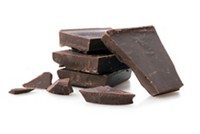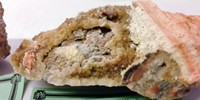Advertisement
Grab your lab coat. Let's get started
Welcome!
Welcome!
Create an account below to get 6 C&EN articles per month, receive newsletters and more - all free.
It seems this is your first time logging in online. Please enter the following information to continue.
As an ACS member you automatically get access to this site. All we need is few more details to create your reading experience.
Not you? Sign in with a different account.
Not you? Sign in with a different account.
ERROR 1
ERROR 1
ERROR 2
ERROR 2
ERROR 2
ERROR 2
ERROR 2
Password and Confirm password must match.
If you have an ACS member number, please enter it here so we can link this account to your membership. (optional)
ERROR 2
ACS values your privacy. By submitting your information, you are gaining access to C&EN and subscribing to our weekly newsletter. We use the information you provide to make your reading experience better, and we will never sell your data to third party members.
Environment
Plumbing The Mystery Of Cigar Breath
Identification of strongest-smelling compounds could lead to breath fresheners
by Sophie L. Rovner
September 11, 2006
| A version of this story appeared in
Volume 84, Issue 38

The breath of a cigar smoker isn't exactly sweet. The odor can range from a musty smell to something akin to burning yard waste. Chemists have now identified the strongest-smelling compounds in cigar-smokers' breath in the hopes of developing breath fresheners to neutralize these odors.

Russell A. Bazemore, an analytical chemist and odor scientist with Wm. Wrigley Jr. Co. in Chicago, enjoys a good cigar but hates the "after aroma" that can linger for a couple of days. So he set out to identify the smelly compounds. He presented his findings before the Division of Agricultural & Food Chemistry at the American Chemical Society national meeting in San Francisco.
Bazemore began by recruiting two colleagues to smoke cigars. He then scraped their tongues with nylon mesh swabs, put the swabs in a vial, and used solid-phase microextraction to collect the volatile compounds released by the swabs. Bazemore then used gas chromatography and mass spectro
metry to separate and identify components in the mixture. By sniffing the separated compounds, he was able to identify the smelliest and possibly the most persistent as 2-ethylpyrrole, 2,3-dimethylpyrazine, and 2-ethylpyridine.
The swab test captured compounds that stick to a layer of plaque on smokers??? tongues. To detect the chemicals that linger in saliva, Bazemore bubbled cigar smoke through an artificial saliva solution. When he collected the volatile compounds subsequently released by the saliva, he found that the strongest-smelling components out of the hundreds present were 2,3,5-trimethylpyridine, 2,5-dimethylpyrazine, and 2-ethyl-3,5-dimethylpyridine.
Each of these compounds contributes a distinctive note to cigar breath. 2-Ethylpyrrole, for instance, smells musty. The pyrazines have a savory odor reminiscent of cooked meat, bread, and coffee. Pyridines combine a nutty aroma with a smell that can only be described as a "stench," Bazemore said.
"It made a lot of sense that we would see these pyrroles, pyridines, and pyrazines in such abundance," Bazemore said. These compounds are produced both by combustion of the cigar and by the Maillard reaction, which turns tobacco leaves brown when they are dried and fermented during cigar manufacture. Both processes generate the pyrolysis compounds from reducing sugars and amino acids present in the leaves.
"It was somewhat unexpected to find out that the pyridines had the most stench associated with them and probably are responsible for the lasting stale, reeking odor associated with strong cigar breath," Bazemore said.
"Now we know what the most offending compounds are, so ideally we will be able to research a solution that will lessen their impact on breath," Bazemore said. "At Wrigley, we're trying to use good science to uncover some of these long-standing mysteries. We're confident that these lingering after-aromas that we???re all accustomed to are a problem that can be resolved."





Join the conversation
Contact the reporter
Submit a Letter to the Editor for publication
Engage with us on Twitter